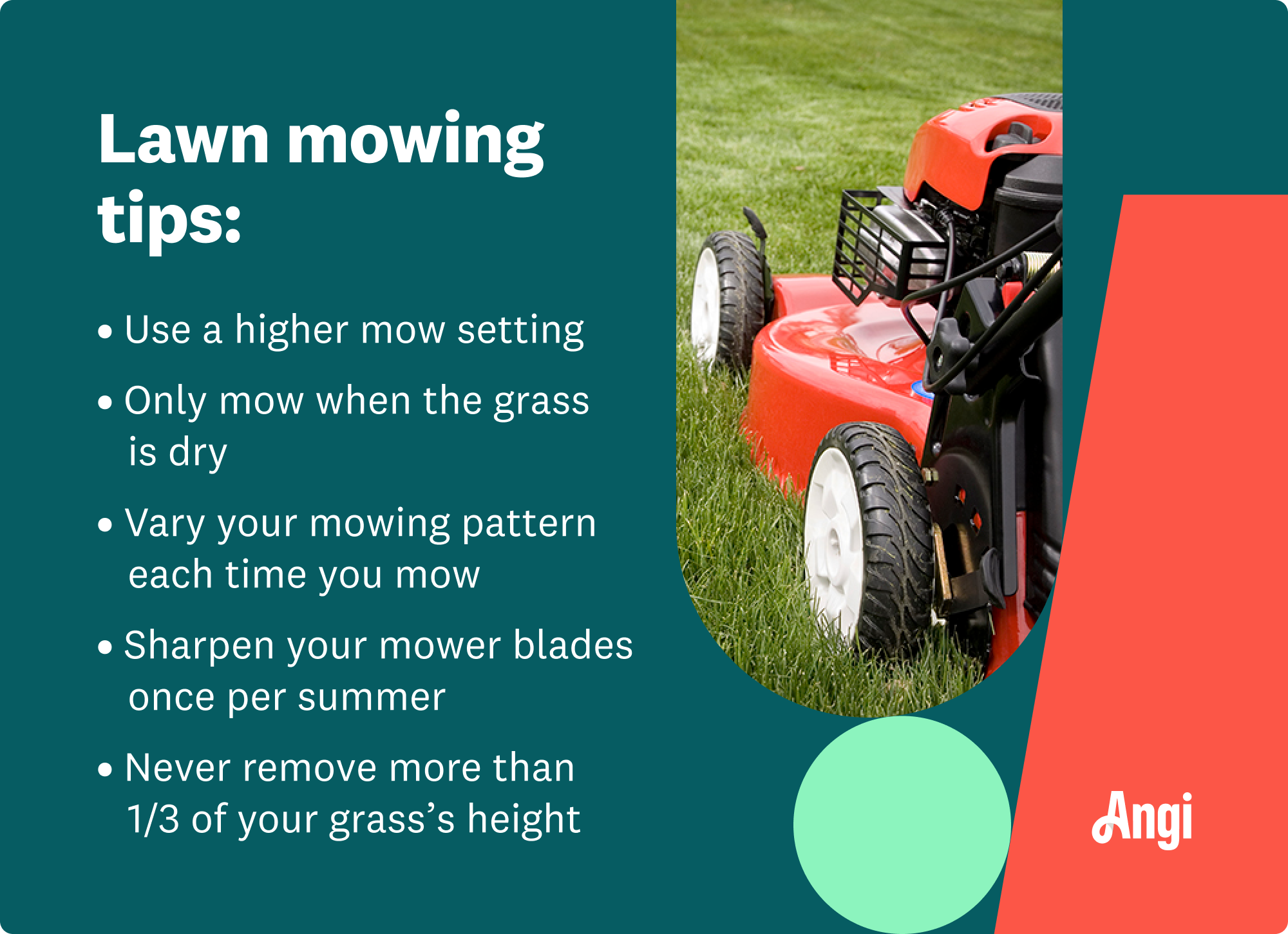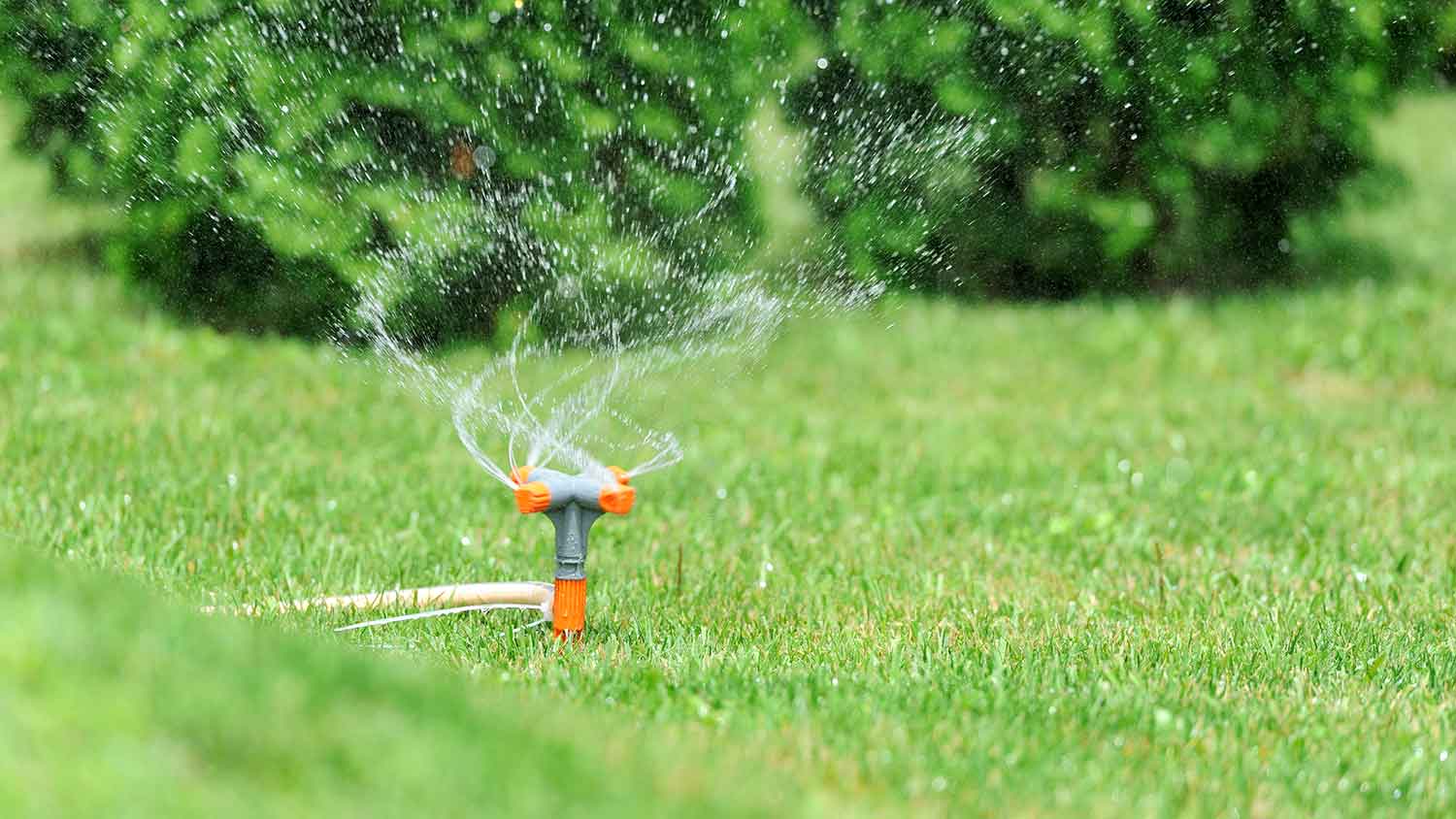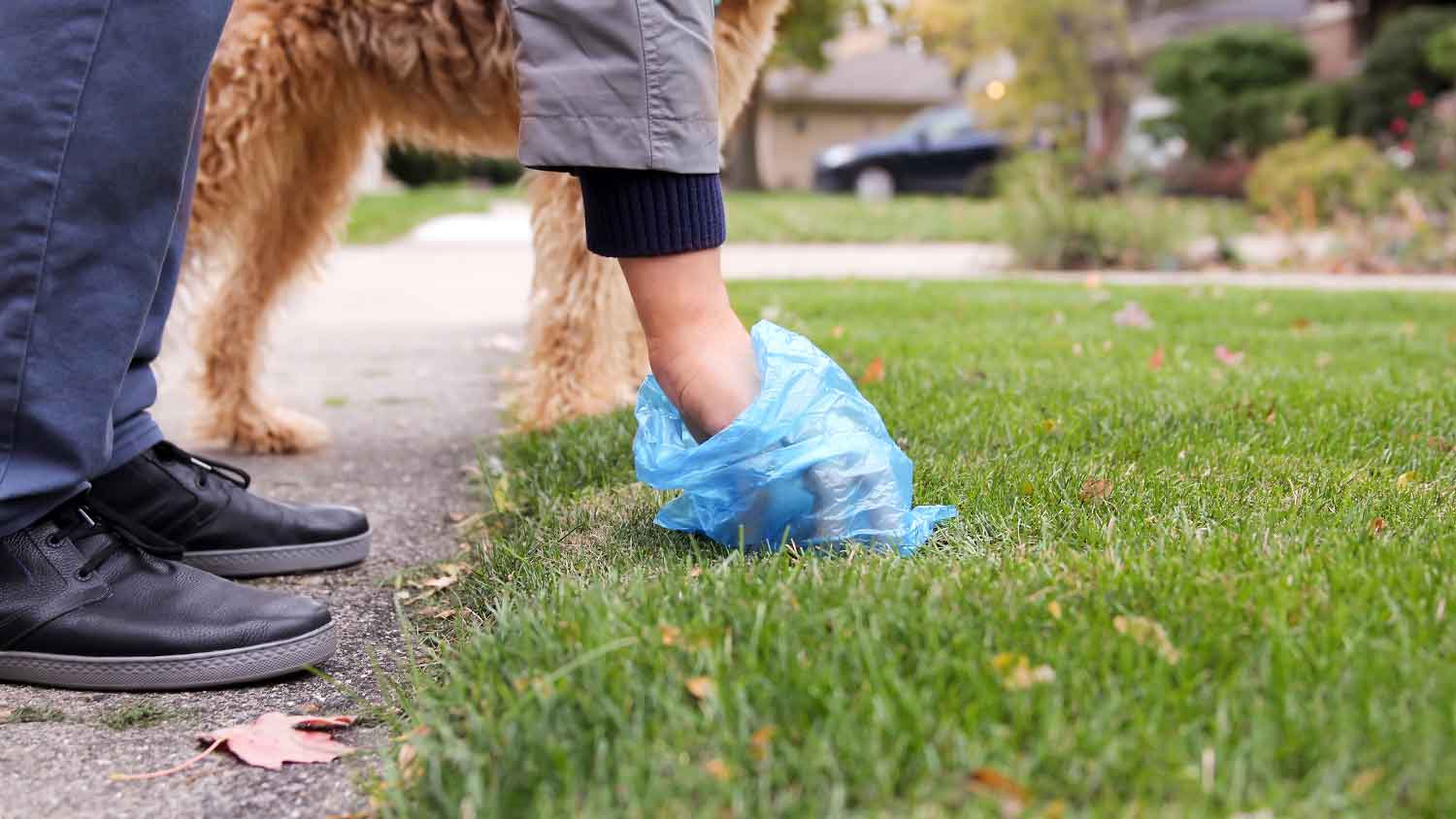
How much it costs to rent a lawn aerator depends on what kind you rent and how long you rent it for. Read on for the full details.
Get your best lawn ever


Not only does a lush lawn make your home look more appealing, but it’s also a great place to sprawl out and soak up some sunshine. The only problem? Maintaining a yard full of healthy grass takes serious work. Fortunately, though, learning how to keep your grass green is pretty straightforward—and the results are worth the effort.

Before you drag your lawnmower out of the garage, make sure you know the recommended height to cut your grass. For most grass types, the ideal height is between 2 and 3 inches, but certain warm-season grasses should be closer to 1 and 1/2 to 2 inches. Cutting your lawn too short can hurt the grass and make it susceptible to browning or weed growth.
If you’re aiming to keep grass green in summer, knowing the right time to water is important. When you water your lawn on a hot day, the water from your sprinklers can evaporate before it even reaches your grass’ roots. To prevent this, be smart about when you run your sprinklers.
In summer, the best time to water your grass is the early morning—ideally, at dawn, but definitely before 9 a.m. If that’s not possible for you, try to water between 4 p.m. and 6 p.m. in the summertime.
Of course, watering your lawn by hand or manually turning your sprinklers on and off for every session isn’t ideal, which is where an automatic sprinkler system comes in handy. With the help of a local sprinkler installation pro, you can set up your irrigation system to run at whatever times you’d like.
The best time to water grass is at dawn or early evening before the sun is fully out. This will result in less wasted water from evaporation.

Like watering at the right time of day, it’s also essential to water your grass for the correct amount of time. For your lawn to thrive, it needs to get enough moisture in the scorching days of summer. But you should also be careful not to leave the sprinklers on for too long and overwater your grass.
As a rule of thumb, most lawns require 20 to 40 minutes of watering one to three times per week. However, your grass type, location, rainfall levels, and other factors will impact how long you should water your grass.
Throughout the year, the soil beneath your grass loses its nutrients due to things like erosion, leaf removal, and stormwater runoff. Fortunately, fertilizing your lawn can help replace these key nutrients so that your grass stays strong and fends off pests and weeds.
Rather than just buying the first bag of fertilizer you find, it’s best to perform a soil test to get a better idea of your lawn’s health and discover which nutrients it really needs. In general, though, you can fertilize cold-season grass once or twice per year, either in the spring, fall, or both. If you have warm-season grass, aim to fertilize in late spring or early summer. Over-fertilization is possible, though, so research your grass and soil type beforehand to avoid fertilizer burn.
Pesky weeds like crabgrass can wreak havoc on your lawn, competing with your grass for sunlight, water, and nutrients. There are a few different approaches for removing weeds, but the best methods usually involve pulling out the existing weeds by the root and then using an herbicide or homemade weed killer to prevent them from coming back. If these tactics don’t work, you might need to call in a local weed control professional.

Dog poop and grass? They’re not the best of friends like we might think. If you have a furry friend who goes to the bathroom in your yard, you might notice unsightly brown patches or dead spots around your lawn. That’s because dog poop and pee contain high levels of nitrogen and phosphorus, too much of which can kill your grass.
Fortunately, there are ways to prevent your dog’s pee from destroying your lawn. For example, you can train them to use the bathroom in a designated grass-free area of your yard, or you can wash away the pee when they finish. Also, keeping your pup well-hydrated dilutes their urine, so it’s easier on your grass. Scooping their poop right away (or at least once per day) will also help keep your lawn in good shape.
Lawn aeration involves poking holes in the soil, which gives the roots better access to air, water, and nutrients. On top of that, aerating your lawn also helps your roots grow stronger and deeper, improves heat and drought tolerance, and facilitates better drainage.
Typically, experts recommend aerating once per year. If it’s been a while since your last aeration or you have a thick layer of thatch buildup, you might need to aerate twice yearly. The best time to aerate is when your grass is in its peak growing phase. Often, that’s in early fall, but your exact timing will depend on your grass and soil types.
From average costs to expert advice, get all the answers you need to get your job done.

How much it costs to rent a lawn aerator depends on what kind you rent and how long you rent it for. Read on for the full details.

The cost to renovate your lawn depends on the extent of the damage. Our guide will show you how much lawn renovation costs.

The cost to reseed a lawn can vary depending on the size of your yard and the condition of the soil. We’ll help you figure out the true cost of reseeding or overseeding your lawn, along with whether or not you should hire a professional.

Wondering how to stop grass from growing into your flower beds? Use these four helpful methods for keeping your grass in the right place.

A bumpy, uneven lawn can create a safety hazard, impede water drainage, make mowing difficult, and more. Learn how to level a lawn and when to call a pro.

Want to know how to get rid of Johnsongrass in your lawn? Here’s how to control this noxious weed, from identifying this invasive grass to using chemicals against it.